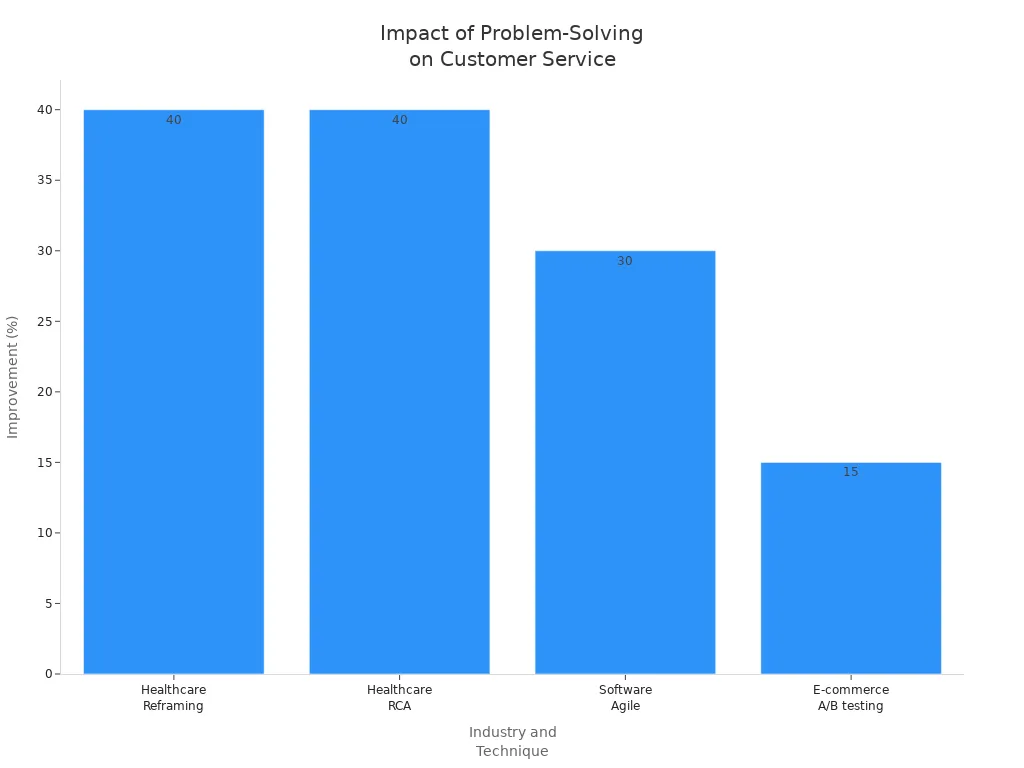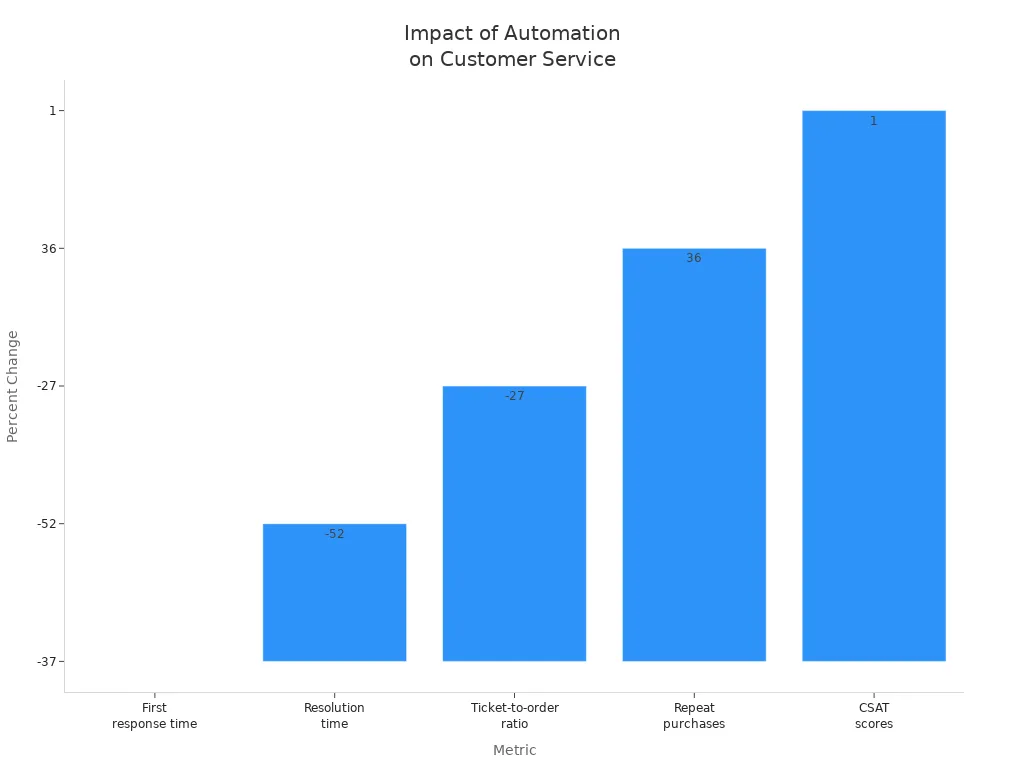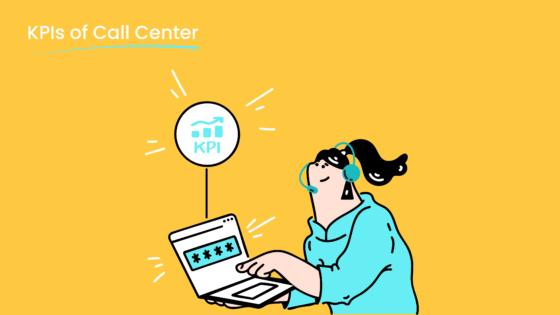Customer Service Assistant Success Starts With These Skills

You need a strong set of essential customer service skills to succeed as a customer service assistant in 2025. Industry reports highlight these must-have skills for customer service:
1. Active Listening
2. Empathy
3. Problem-Solving Abilities
4. Clear Communication
5. Personalization
6. Product/Service Knowledge
7. Patience and Resilience
8. Proactive Engagement
(Gmelius, SuperOffice)
Customers expect quick, personalized help across many channels. Sobot AI and Sobot call center tools help you meet these expectations. Your willingness to learn and adapt to new technology, like omnichannel platforms, sets you apart. You improve customer satisfaction when you combine learning with strong customer service skills.
Customer Service Assistant Must-Have Skills

Empathy
Empathy means you understand and share the feelings of your customer. This skill helps you connect with people on a personal level. In 2025, empathy stands out as one of the most important customer service skills. The Future of Jobs Report 2025 lists empathy as a top skill for customer service assistants. Technology can answer questions quickly, but only you can show real understanding and care. The BoldDesk blog points out that empathy builds trust and loyalty in a world full of digital tools.
Empathy helps you handle complex or emotional situations that AI cannot solve alone. You can read between the lines, notice when a customer feels upset, and respond with kindness. Sobot values customer-centricity and innovation. Sobot’s solutions let you focus on what matters most—making customers feel heard and valued.
| Strengths of AI | Strengths of Human Agents |
|---|---|
| Handling routine inquiries quickly and consistently | Demonstrating empathy and emotional intelligence |
| Processing large data volumes | Creative problem-solving for unique situations |
| Providing instant, 24/7 responses | Building authentic connections and trust |
| Managing high ticket volumes | Understanding complex and unstated customer needs |
| Identifying interaction patterns | Making ethical judgment calls |
Active Listening
Active listening means you pay close attention to what the customer says and how they say it. You do not just hear words—you notice tone, feelings, and body language. This skill helps you find the real problem, even if the customer does not say it directly. Research shows that active listening improves customer satisfaction and trust. When you listen well, customers feel respected and valued.
- Active listening helps you manage upset customers by showing empathy and understanding.
- Asking follow-up questions and repeating back concerns makes customers feel truly heard.
- Authentic conversations build customer loyalty and improve key metrics like CSAT and NPS.
- Call center agents who listen well create better experiences and encourage repeat business.
Sobot’s unified workspace and omnichannel tools help you focus on the customer, not the technology. You can use these tools to keep track of conversations and respond with empathy and friendliness.
Communication
Communication is the way you share information with customers. Clear communication means you use simple words and a friendly tone. You explain things step by step, so customers do not feel lost. In digital and omnichannel environments, you need to switch between chat, email, phone, and social media. You must keep your message consistent and easy to understand.
- Seamless integration of channels helps you give a smooth experience.
- Personalization makes customers feel special.
- Real-time responses keep customers engaged.
- Using the right tools, like Sobot’s omnichannel solution, lets you manage all conversations in one place.
Effective communication builds trust and helps you solve problems faster. You show friendliness and a positive attitude in every message. This approach makes customers feel comfortable and valued.
Tip: Always check that your words match your tone and attitude. Friendliness and clear communication make every customer interaction better.
Problem-Solving Skills
Problem-solving skills help you handle customer issues quickly and effectively. In customer support, you face many different situations every day. You need strong problem-solving abilities to find the best answers for each customer. These skills include critical thinking, a solution-oriented approach, and using the right tools. When you build these skills, you improve customer satisfaction and make your work easier.
Critical Thinking
Critical thinking lets you break down complex customer problems into smaller steps. You ask the right questions and look at all the facts. This skill helps you find the real cause of a problem, not just the surface issue. You also learn to consider different solutions and pick the one that works best for the customer.
- You use critical thinking to process information and make smart choices.
- You adapt your approach based on what the customer needs.
- You ask probing questions to understand each case.
- You create solutions that fit each customer, which leads to better results.
Critical thinking supports proactive problem-solving. It helps you reduce complaints and improve your mood at work. You handle many types of customers and help your company grow.
Solution-Oriented Mindset
A solution-oriented mindset means you focus on finding answers, not just pointing out problems. You stay positive and look for ways to help the customer. This mindset helps you plan your actions and think creatively.
| Key Benefit | Description |
|---|---|
| Innovative & Tailored Products | You help your company create new products that meet customer needs. |
| Customer Loyalty | You build trust and keep customers coming back. |
| Competitive Advantage | You help your company stand out and grow its market share. |
- You stay optimistic and tackle problems head-on.
- You keep your focus on solutions, not frustration.
- You plan your steps and think ahead.
- You use creativity to find the best answers.
A solution-oriented approach encourages teamwork and helps everyone deliver more value to customers. It builds a culture where you solve problems together and keep customers happy.

Using Sobot Voice/Call Center Tools
You can boost your problem-solving skills by using advanced tools like Sobot Voice/Call Center. Sobot gives you AI-powered features that make customer support faster and smarter. The platform offers a unified workspace, real-time analytics, and intelligent voicebots. These tools help you handle customer requests, predict needs, and provide 24/7 support.
- Sobot Voicebot can resolve over half of customer interactions in real time.
- AI agents collect information and guide customers to answers.
- Outbound voicebots can increase sales by more than 30%.
- The system supports many languages and channels, so you can help customers from anywhere.
Sobot’s analytics and reporting features help you spot trends and improve your service. You get insights that let you solve problems before they grow. With Sobot, you deliver consistent, high-quality customer support across all channels.
| Industry/Context | Problem-Solving Technique | Outcome/Impact on Customer Service |
|---|---|---|
| Healthcare | Reframing patient care issue | 40% improvement in patient satisfaction scores |
| Healthcare | Root Cause Analysis (RCA) | 40% reduction in medication errors over 6 months |
| Software Development | Agile methodologies (Scrum) | 30% faster product delivery and increased customer satisfaction |
| E-commerce | A/B testing | 15% increase in conversion rates, reflecting better customer experience |

Tip: Use Sobot’s AI Copilot and analytics to improve your problem-solving abilities. These tools help you respond faster and make better decisions for every customer.
Adaptability & Tech Savviness
Embracing Change
You need adaptability to succeed as a customer service assistant. Every customer brings a new challenge, and no two situations are the same. Adaptability helps you adjust your approach, whether you face a system outage or a new product launch. Companies now expect you to handle changes quickly and keep the customer experience smooth.
Adaptability is not just about reacting. You must stay open to feedback and new ideas. Commit to lifelong learning by joining courses and webinars. This keeps your skills sharp and helps you stay ahead in your field.
Many companies now use sandbox environments. These let you test new workflows without risking live customer service. You can experiment, learn, and improve the customer experience safely. This approach builds your confidence and helps you maintain high service quality, even when things change fast.
- 83% of companies believe hiring virtual assistants improves productivity and efficiency.
- 74% plan to keep offering remote support options.
- Over 80% of hospitals invest in remote scheduling and record-keeping systems.
You need to develop both soft skills and tech skills. Adaptability helps you meet customer needs, even as technology and expectations change.
Digital Tools & AI
Digital tools and AI are now part of daily customer service. You use these tools to improve the customer experience and solve problems faster. AI-powered chatbots and virtual assistants can answer questions 24/7. Predictive analytics help you understand what a customer might need before they ask.
Here are some important digital tools and AI technologies for customer service assistants in 2025:
- AI chatbots and virtual assistants for instant responses and self-service.
- Predictive analytics to anticipate customer needs.
- AI-powered agent assistance for real-time guidance.
- Dynamic call routing to match customers with the best agent.
- Unified data platforms to create a complete view of each customer.
You need to build skills in using these tools. Many companies report a 72% increase in productivity when they use AI extensively. Automation, including chatbots, is now common in customer support. Adaptability lets you learn new systems quickly and use them to improve the customer experience.
Sobot Omnichannel Solution
Sobot’s Omnichannel Solution gives you the tools to deliver a seamless customer experience across every channel. You can manage chat, email, phone, and social media from one unified workspace. This means you never lose track of a customer’s history or needs.
Organizations using Sobot’s solution have seen a 20% drop in inbound discussion volume and a 30% boost in agent productivity. Customer satisfaction rates reach 95%, and positive feedback exceeds 96%. Sobot’s AI-driven automation reduces repetitive tasks and cuts first response times by 74%. You can focus on building real connections and using your skills to solve complex issues.
Sobot’s platform supports your adaptability by making it easy to switch between channels and tools. You can personalize every customer interaction and keep the customer experience consistent, no matter how the conversation starts.
Sobot’s solution also helps companies meet sustainability goals by optimizing workflows and reducing energy use. Brands like Samsung have reported a 30% increase in productivity after adopting Sobot’s tools. You can learn more about Sobot’s Omnichannel Solution here.
Proactive Customer Service
Proactive customer service means you do not wait for problems to happen. You use your skills to anticipate customer needs and act before issues arise. This approach builds trust and improves the customer experience. Research shows that 52% of customers leave brands after bad experiences, but consistent, proactive support increases loyalty and retention (SAP Emarsys Customer Loyalty Index 2024).
Anticipating Needs
You can anticipate customer needs by using data and technology. AI tools, like those in Sobot’s omnichannel platform, analyze customer order history, behaviors, and preferences. These insights help you predict what a customer might want next. Banks use AI assistants to answer questions and detect fraud quickly. You can use predictive analytics to spot issues before they happen and offer solutions early. Real-time data lets you adjust your approach and personalize every customer interaction. This skill helps you deliver a better customer experience and keeps customers coming back.
- AI-powered insights give you a full view of each customer’s past interactions and preferences.
- Sentiment analysis helps you understand customer emotions and respond with empathy.
- Predictive alerts let you act before a customer faces a problem.
Taking Initiative
Taking initiative means you use your skills to solve customer issues without waiting for instructions. You communicate clearly, listen actively, and use positive language. You aim to resolve problems during the first interaction, which improves satisfaction. Companies like Zappos and Ritz-Carlton empower employees to make decisions and exceed customer expectations. Sobot’s unified workspace helps you access customer data quickly, so you can act fast and deliver solutions.
Tip: Focus on first-call resolution. Use your product knowledge and proactive problem-solving skills to help customers right away.
Effective strategies for taking initiative:
- Use positive language and empathy.
- Communicate clearly and avoid jargon.
- Keep learning about products and services.
- Aim for first-touch resolution.
Leveraging Automation
Automation boosts your skills and makes customer service more efficient. Sobot’s AI-powered chatbots and voicebots handle routine tasks, freeing you to focus on complex issues. Automation provides fast, 24/7 responses, reducing wait times and improving the customer experience. Klarna resolves two-thirds of customer chats with AI, showing how automation increases efficiency.
| Metric | Impact of Automation |
|---|---|
| Reduction in first response time | 37% decrease |
| Reduction in resolution time | 52% decrease |
| Increase in repeat purchases | 36% increase |
| Increase in CSAT scores | 1% increase |

Automation supports your skills by handling FAQs and repetitive tasks. You can focus on building relationships and solving unique customer problems. Combining automation with human touch creates a memorable customer experience and increases loyalty.
Emotional Intelligence & Patience
Emotional intelligence and patience are two of the most important skills you need as a customer service assistant. These skills help you connect with every customer, even in tough situations. Studies show that high emotional intelligence leads to better service, higher satisfaction, and stronger relationships. You can use these skills to improve your work and make each customer feel valued.
Managing Emotions
You face many different emotions each day. Customers may feel upset, confused, or frustrated. Your emotional intelligence helps you recognize these feelings and respond in a caring way. Research in healthcare shows that emotional intelligence leads to better care, higher satisfaction, and less stress for workers. Empathy, emotional awareness, and patience are key parts of these skills.
- Nurses with high emotional intelligence give better care and have happier patients.
- Emotional intelligence training increases job satisfaction and reduces burnout.
- Empathy and emotional awareness help you understand what each customer needs.
You can manage emotions by using these techniques:
- Reassure customers by letting them know you support them.
- Focus on solutions instead of problems.
- Ask questions to understand the issue fully.
- Keep professional boundaries while showing empathy.
- Apologize sincerely when needed.
- Balance listening with keeping the conversation on track.
When you use emotional intelligence, you build trust and help customers feel heard. Sobot’s unified workspace supports you by giving you all the information you need to respond with care and accuracy.
Staying Calm Under Pressure
Customer service can be stressful. You may face angry customers or high workloads. Staying calm under pressure is a skill you can develop. Emotional intelligence helps you keep your cool and solve problems, even when things get tough.
| Strategy / Skill | Description |
|---|---|
| Mindfulness | Take a moment to breathe and focus before each call. |
| Humor | Use light humor to ease tension and connect with customers. |
| Tactical Empathy | Show understanding, even if you disagree with the customer. |
| Breathing Techniques | Slow, deep breaths help you stay calm during stressful moments. |
| Setting Boundaries | Politely enforce rules to protect your well-being. |
| Support Network | Ask colleagues or supervisors for help when needed. |
| Resilience | See setbacks as chances to learn and grow. |
When you stay calm, you give every customer a positive experience. You also protect yourself from stress and burnout. Calm agents help customers feel safe and respected. For example, if a customer complains about a faulty product, you can listen, apologize, and offer a solution. This approach turns a negative moment into a chance to build loyalty.
- Use empathy to calm upset customers.
- Listen carefully to understand their needs.
- Show patience, even if the customer is slow or upset.
- Adapt to changes and keep a positive attitude.
- Work with your team to solve problems quickly.
Sobot’s tools, like AI-powered chatbots and unified workspaces, help you manage high-pressure situations. You get real-time support and data, so you can focus on using your emotional intelligence and patience to deliver great service.
Conflict Resolution
Handling Difficult Situations
You face difficult situations every day as a customer service assistant. Your skills in conflict resolution help you turn tough moments into positive outcomes. Conflict resolution training gives you practical ways to calm heated situations. You learn to use de-escalation techniques, which help you keep control and guide the conversation. These skills let you handle angry or upset customers with confidence.
Here are proven methods for handling tough customer situations:
- Adapt your communication style to match the customer’s tone. This builds trust and helps you connect. Studies show that 70% of service success comes from this approach (Customer Service Institute, 2024).
- Manage expectations clearly. Tell the customer what you can do, how long it will take, and any limits. This prevents many conflicts before they start.
- Validate customer emotions. Say things like, “I understand how you feel.” This shows empathy and helps calm the situation.
- Set professional boundaries. Stay calm and explain what behavior is not okay. Use the “broken record” technique to repeat your message without getting upset.
- Offer practical solutions. Give the customer choices and explain each option. This helps them feel in control.
- Follow up after the issue is resolved. Check in with the customer to make sure they are satisfied. This step builds loyalty and trust.
Conflict resolution expertise grows with regular training. You learn to spot the real problem, use different strategies, and make quick decisions that help both the customer and your company. These skills improve customer satisfaction and help you build strong relationships.
Tip: Document each difficult interaction. This helps your team learn and improves future service.
Maintaining Positive Relationships
After you resolve a conflict, your skills help you keep a good relationship with the customer. Active listening is key. You listen without interrupting, so the customer feels valued. Empathy and understanding help you connect and ease any tension.
You should always stay calm and professional. If the customer feels upset, acknowledge their feelings and apologize if needed. This helps to diffuse anger and shows respect. Clarify the problem by summarizing what you heard. This step makes sure you understand the issue and the customer knows you care.
Offer clear solutions and alternatives. When you give honest answers, you show that you want to help. After the problem is fixed, follow up with the customer. A quick message or call shows you care about their experience and want to keep their trust.
Use positive language in every interaction. Words like “happy to help” or “let’s find a solution together” keep the conversation friendly. If the problem is too big for you to solve, know when to escalate it. This ensures the customer gets the best help possible.
Sobot’s unified workspace makes it easy to track customer history and follow up after a conflict. You can see past issues and make sure each customer feels heard. This approach leads to higher customer satisfaction and loyalty.
Note: Document each conflict and how you solved it. This helps you and your team improve your skills and provide better service in the future.
Product & Data Knowledge
Understanding Products
You need strong product knowledge to deliver excellent customer service. When you understand your company’s products, you can answer questions quickly and solve problems with confidence. This skill helps you explain features, benefits, and troubleshooting steps. Customers trust you more when you give clear and accurate information. Product knowledge builds loyalty and improves customer satisfaction.
You can build your product knowledge through training classes, hands-on practice, and using a knowledge base. Many companies use organized documentation and knowledge-sharing platforms. These tools help you find answers fast and keep information up to date. You should also join mentoring programs and ask questions when you need help. When you know your products well, you can resolve issues on the first contact, which boosts customer experience.
Tip: Use knowledge base software to keep product details easy to access. This helps you and your team deliver consistent support.
Data Literacy
Data literacy is a key skill for every customer service assistant. You use data to spot patterns, trends, and problems. This skill helps you improve your work and make better decisions. When you read and understand data, you can see what customers need and how to help them best. Data analysis turns raw numbers into useful insights. You can use these insights to adjust your approach and improve customer satisfaction.
Here are ways data literacy helps you:
- Identify recurring customer issues and fix them faster.
- Use analytics tools to track customer experience and service quality.
- Communicate insights clearly to your team.
- Support the use of AI and automation to handle routine tasks.
- Make decisions that improve customer satisfaction and efficiency.
You should practice reading reports, using CRM software, and looking at customer feedback. These skills help you deliver a better customer experience and keep your company ahead.
| Data Literacy Skill | Benefit for Customer Service |
|---|---|
| Spotting trends | Improve customer experience |
| Interpreting data | Solve problems faster |
| Using analytics tools | Boost customer satisfaction |
| Communicating insights | Help your team work better |
Sobot Customer Story: OPPO
OPPO, a global leader in smart devices, wanted to improve its customer service. The company used Sobot’s AI-driven chatbot and marketing solutions. With these tools, OPPO reached an 83% chatbot resolution rate. The company also saw a 57% increase in repurchase rate. These results show how strong product and data knowledge can transform customer experience and drive business growth.
Sobot’s solutions helped OPPO manage customer data and automate routine questions. This freed up agents to focus on complex issues. OPPO’s team used analytics to track customer satisfaction and improve their service. The company’s success shows that when you combine product knowledge, data literacy, and the right technology, you can achieve high customer satisfaction and loyalty.
Note: Sobot’s unified workspace and AI tools make it easy for you to access product information and customer data. This helps you use your skills to deliver a great customer experience every time.
Showcasing Customer Service Skills

Resume Tips
You want your resume to stand out when you apply for customer service representative jobs. Start by tailoring your resume to match the job description. Use bullet points to highlight your customer service skills and achievements. Show both hard skills, like using CRM software, and soft skills, such as empathy and communication. Add measurable results, like “Increased customer satisfaction scores by 20%” or “Reduced call handling time by 30 seconds.”
List certifications, such as Certified Customer Service Professional (CCSP), to show your expertise. If you speak more than one language, mention how this helped customers. For entry-level roles, include transferable skills from internships or volunteer work. Keep your resume clear and easy to read. Use strong action verbs like “led,” “directed,” or “modeled.” Limit your resume to one page and avoid unnecessary graphics.
Tip: Use bullet points to make your resume easy to scan. Focus on achievements, not just responsibilities.
Interview Strategies
During interviews, you need to show your customer service skills in action. Research the company’s products, customers, and mission before you arrive. Use the STAR method (Situation, Task, Action, Result) to organize your answers. Share stories that show empathy, patience, problem-solving, teamwork, and communication.
Be honest about your strengths and weaknesses. Explain how you work independently and when you ask for help. Show how you stay calm under stress by describing a specific situation. Highlight your experience with digital tools, such as CRM software or live chat platforms. Mention any workshops or courses you have taken to improve your skills. Dress professionally, arrive early, and bring all needed documents. Prepare thoughtful questions to ask the interviewer.
Note: Practice your answers out loud. This helps you sound confident and clear.
Real-World Examples
Many companies value customer service representatives who use their skills to improve the customer experience. For example, an administrative assistant set up a feedback system that increased customer satisfaction ratings. This person resolved complaints, managed communication, and followed up with customers. The result was stronger relationships and more trust.
Here is a table with more examples:
| Company | Customer Service Skill Applied | Real-World Example Description |
|---|---|---|
| Chewy | Empathy and personalized care | Sent flowers and refunds to customers after pet loss, showing deep empathy and support. |
| IKEA | Proactive self-service and error prevention | Provided guides to help customers avoid common mistakes during assembly. |
| Target | Accessibility and inclusivity | Designed stores and online platforms for all customers, including adaptive clothing for children with special needs. |
| Disney | Use of technology and AI | Used AI to personalize Disney+ content and improve customer experience. |
| Ace Hardware | Omnichannel support | Allowed customers to switch between online and in-store shopping easily. |
| Nordstrom | Personalized elevated service | Offered personal shopping and generous return policies to build customer loyalty. |
| Zappos | Employee happiness to drive customer satisfaction | Focused on staff training and culture, leading to better customer service. |
You can use Sobot’s unified workspace and omnichannel solutions to track customer interactions and improve your customer service skills. Sobot helps customer service representatives deliver fast, personalized support across all channels. Learn more about Sobot’s products at Sobot.io.
You need strong customer service skills to succeed in 2025. Mastering these skills helps you deliver better customer experiences and build loyalty. Studies show that 80% of customers value fast, knowledgeable support (Salesforce Research). Your willingness to learn and adapt sets you apart. Sobot’s innovative tools support your learning and growth. Embrace new technology and proactive habits to advance your career. Keep building your skills and stay ready for every customer interaction.
FAQ
What are the most important customer service skills for a customer service assistant in 2025?
You need empathy, active listening, clear communication, and problem-solving skills. Companies like Sobot value these abilities because they help you connect with customers and solve issues quickly. These customer service skills help you stand out in a fast-changing world.
How can I improve my customer service skills using technology?
You can use tools like Sobot’s omnichannel solution to manage chats, calls, and emails in one place. AI-powered chatbots and analytics help you respond faster and learn from data. These tools make your work easier and help you deliver better customer service.
Why does product knowledge matter for a customer service assistant?
Product knowledge lets you answer questions quickly and accurately. Customers trust you more when you know the details. Sobot’s unified workspace gives you instant access to product information, so you can help customers and solve problems on the first try.
How does Sobot help customer service assistants handle difficult situations?
Sobot provides AI-powered chatbots and a unified workspace. These tools help you track customer history and offer solutions fast. For example, OPPO used Sobot to reach an 83% chatbot resolution rate, which improved customer satisfaction and made work easier for their team.
What is the best way to show customer service skills on a resume?
List your customer service skills, such as empathy, communication, and problem-solving. Use numbers to show results, like “improved customer satisfaction by 20%.” Mention your experience with tools like Sobot’s call center or omnichannel platform to show you are ready for modern customer service.
See Also
How AI Agents Are Transforming Customer Support Services
Top Ten Ways To Improve Live Chat Satisfaction
Effective Strategies For Managing Quality In Call Centers
Ways AI Software Enhances Efficiency In Customer Service
Comprehensive Guide To Quality Management Systems In Call Centers
